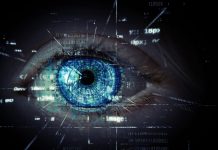The technology works on the principle that depth is perceived when our eyes each see a slightly offset view of a scene. Normally, two images are used to achieve this effect, with 3D glasses coming in to help integrate them, as the images still appear separate when not viewed from the optimal viewing angle.
However, Alioscopy has removed the need for such equipment with the use of eight image streams, casting an array of images on each eye. This allows for the perception of depth and volume to happen without 3D glasses, even when viewed from different angles.
An Alioscopy screen mixes these eight views on an optical filter-coated panel, turning images that would otherwise appear fuzzy on a standard TV into stunning impressions of depth.
The fuzzy images are a result of screen captures of the 3D images represented on a two-dimensional medium, and according to an Alioscopy spokesperson, the viewer needs to be positioned at least three meters from the TV screen to expereince the 3D effect.
The Alioscopy screen also displays full HD flat images without any loss of quality and boosts bandwidth of 9GB per minute. With a standard 40-inch screen retailing at 8,000 euros (or US$12,400), it is currently intended more for marketing communications and advertising purposes, such as digital signages, billboards and outdoor displays, rather than home entertainment, as 3D content has to be specially rendered for the display.



































